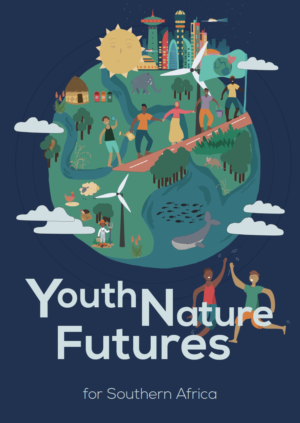Over the last few years, the Intergovernmental Science-Policy Platform on Biodiversity and Ecosystem Services (IPBES) has published landmark assessments reviewing the state of the world’s ecosystems.
Amidst troubling reports on the health of our life-supporting ecosystems, these assessments also suggest various methods to build better futures for both people and the planet. But what do these “nature-futures” look like? Visions for nature-futures inspired by the lives and perspectives of young people, particularly those from the Global South, have not yet been adequately explored.
To capture visions of nature-futures as imagined by youth from the Global South, the CST facilitated a series of online events in 2021 with youth organisations and networks operating in southern Africa. These events introduced the IPBES assessments to a variety of youth groups in the region, while providing space for young people to share their stories of environmental change and its impact on their lives. Participants were led through “futuring” exercises to stimulate discussion on what sustainable and just futures would look like to them.
In addition, a competition was launched to promote the development of artworks and other creative outputs that represent youth nature-futures for southern Africa. In total, sixteen projects were funded to create art that links young people to environmental change and exhibits their hopes and dreams for the future. Projects showcased a variety of artistic expressions, such as murals, poems, songs, dance, creative signage, and recipe collections.
“We were thrilled to work with eighteen youth groups from across southern Africa, all of which are doing important work to improve their communities and environment. Their visions for the future were inspiring, and the creativity they showed in representing those futures in poetry, art, dance, and music has been wonderful to see. Supporting southern Africa’s young people is a key part of creating more sustainable and just trajectories for the region,” said project member Maike Hamann, a researcher at the CST.
The full report can be accessed here. Visit youthnaturefutures.org to get involved.


